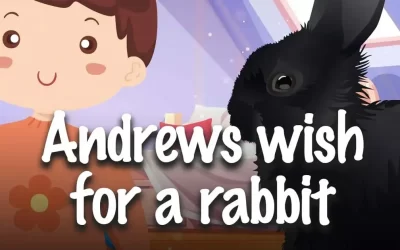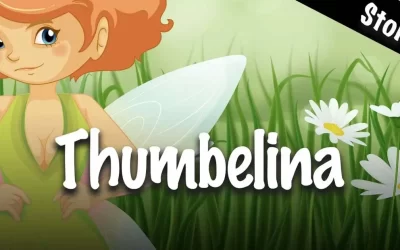
Introduction
In a world where legends come to life, our story begins with Rapunzel—a young woman with a heart full of hope and a tower full of secrets. Follow this captivating tale that starts in Rapunzel’s golden world, caught between ancient evil and blossoming love.
The Story of Rapunzel
In a land far away, there lived a poor farmer and his wife. One day, they tried to pick fruit from their neighbor’s garden. However, their neighbor was actually an old, wicked witch. She screamed, “How dare you steal from my garden! I will turn you both into rats!” The couple trembled with fear. Finally, the witch said, “Fine, I’ll let you go. But you must give me your first child.” Terrified, they agreed immediately and fled.
A few years later, a beautiful baby girl was born to the farmer and his wife. Immediately after, the old witch came and snatched the girl away. She named her Rapunzel and kept her locked in a tall tower. She grew up to be a beautiful girl, but the most beautiful thing of all was her long, golden hair.
The only person she had ever seen was the old witch. Every day, the witch came to the foot of the tower and called, “Rapunzel, Rapunzel, let down your hair!” She would then let her long braid fall out of the window, and the witch would hold onto it and climb up.
One day, a prince passing by hid behind the trees and watched the witch. As soon as she left, he decided to try. “Rapunzel, Rapunzel, let down your hair!” he shouted and climbed up to her room. She was astonished to see the prince. She had never seen anyone so handsome before. The prince also fell in love with her. They began meeting secretly every day after the witch left.
One day, however, Rapunzel accidentally said to the witch, “You are so much heavier than my prince!” The witch realized what had been happening. She screamed and shouted in anger. She cut off Rapunzel’s hair and sent her deep into the forest. That day, when the prince came, he found the witch waiting for him at the top of the tower. She cursed and shouted some more before casting a spell on him, causing the prince to lose his sight. The prince, now blind and heartbroken, wandered through the woods.
Many days later, Rapunzel found him wounded among the trees. She began to cry at the sad sight of her prince. But as soon as her tears fell on him, his wounds healed, and his sight returned! The first thing the prince saw was his beloved Rapunzel. They were overjoyed to find each other again. They traveled to his kingdom and lived happily ever after, far away from the wicked witch.
The End
You may also like: Goldilocks and the Three Bears
Giambattista Basile and His Legacy
Giambattista Basile (born around 1575, died 1632) was an Italian writer and fairy tale collector best known for his work “Il Pentamerone,” which contains a collection of over 50 fairy tales, including the story of Rapunzel. Basile was one of the first authors to write down fairy tales and compile them into a book, making him a pioneer in the genre.
Basile was born in Naples, Italy, and was a cultured man who mastered several languages and had a broad interest in literature, art, and history. He was also a skilled poet and wrote several poems during his lifetime. Basile was one of the first writers to compose fairy tales in a realistic and naturalistic style, making his works unique compared to the orally told tales of the time.
Although Basile was not well-known during his lifetime, his works have gained significant recognition over the years, and his collection of fairy tales, “Il Pentamerone,” is considered one of the most important sources of fairy tales in the world. Many of the tales included in “Il Pentamerone” have inspired other writers and have been told and retold many times since. Basile died in 1632 in Naples.
Symbolism of Rapunzel
Rapunzel’s long, golden hair is a powerful symbol in the fairy tale, carrying multiple layers of meaning. On the surface, it represents beauty and femininity, characteristic of many classic fairy tale figures. However, Rapunzel’s hair also symbolizes freedom and strength, adding complexity to the symbolism.
The witch uses Rapunzel’s hair as a tool to control her, which can be interpreted as an allegory of oppression and control. The hair, a source of beauty, becomes a means of imprisonment. This can be seen as a commentary on how beauty is often used to define and confine women in society.
When Rapunzel is finally freed from the tower, it represents a journey towards self-discovery, independence, and maturity. She breaks away from the bonds that have held her captive, which can be seen as a metaphor for personal growth and self-realization. It is a transformation from passivity and submission to activity and autonomy.
This symbolism can also be seen as a timeless expression of the human quest for freedom and self-fulfillment. Rapunzel’s hair, initially a symbol of her imprisonment, later becomes a symbol of her freedom as she and the prince use it to escape from the witch. It serves as a reminder that the things used to control us can also become tools of our liberation if we have the courage to take control of them.
Moreover, Rapunzel’s hair can also be seen as a symbol of connection. It connects her to the witch and later to the prince, becoming a physical manifestation of the relationships that shape her life. This adds another layer to the symbolism, making Rapunzel’s hair a rich and multidimensional symbol that carries many of the story’s central themes.
Overall, Rapunzel’s hair is not just a decorative element in the story but a central symbol that carries deep and diverse meaning. It represents beauty, freedom, strength, connection, and transformation, and it is a vivid example of how symbolism can add depth and nuance to a narrative.
Rapunzel in Popular Culture
The story of Rapunzel has found its way into many different media and art forms. From children’s books to plays and films, Rapunzel’s story has been interpreted and retold in many ways. Disney’s 2010 film “Tangled” is a modern example that offers a fresh take on the story while preserving its classic elements. Rapunzel’s presence in popular culture shows how this old tale continues to resonate with modern audiences.
Rapunzel and Feminism
Rapunzel’s transformation from a captive victim to a strong and independent woman has made the story an interesting subject of study within feminist literature. The story can be read as an allegory for women’s struggle for autonomy and self-determination. Rapunzel’s liberation from the witch’s control can be seen as a metaphor for women’s liberation from patriarchal norms and expectations. This reading of Rapunzel offers a deeper understanding of the themes of femininity and empowerment found in the fairy tale.
Comparison with Other Fairy Tales
Rapunzel shares many similarities with other classic fairy tales such as “Snow White” and “Cinderella.” These similarities include themes of love, betrayal, transformation, and triumph over evil. By comparing Rapunzel with these and other fairy tales, one can identify universal themes and archetypes found in the fairy tale genre. This can provide insight into how these stories speak to common human experiences and values.
Rapunzel’s Influence on Literature and Art
The story of Rapunzel has had a lasting impact on literature and art, extending far beyond the fairy tale’s original form. From paintings by famous artists like Dorothea Tanning, who used Rapunzel’s image to explore themes of femininity and isolation, to plays and ballets that have retold the story on stage, Rapunzel’s image and narrative have inspired a wide range of artistic expressions.
This influence spans different cultures and time periods. In literature, authors like Anne Sexton and Sara Maitland have used Rapunzel’s story as a platform to explore complex questions of identity, autonomy, and women’s roles in society. In visual art, Rapunzel’s portrait has been a subject of fascination for many artists, from classical paintings to modern installations.
Music and performing arts have also embraced Rapunzel. Ballets and operas have used the story as a foundation for works that combine movement, music, and drama to bring Rapunzel’s tale to life on stage. These interpretations have often added new dimensions to the story, exploring its psychological depths and creating connections to contemporary themes and concerns.
Even in film and television, Rapunzel’s story has found a place. From classic film adaptations to modern retellings like Disney’s “Tangled,” Rapunzel’s story has been the subject of creative reinvention and adaptation.
This diversity of artistic expressions shows how the fairy tale of Rapunzel continues to inspire artists to explore and express universal themes like love, freedom, and transformation. It also underscores how fairy tales can transcend their original context and become part of a broader cultural dialogue.
Studying this influence can provide a deeper understanding of how fairy tales convey timeless truths and continue to inspire generations. It can also shed light on how different artists have used Rapunzel’s story to reflect and explore their own cultural and societal concerns. Overall, Rapunzel’s influence on literature and art is a testament to the story’s ability to touch and inspire across time and culture, and a proof of the enduring relevance and power of fairy tales.
Read also: The Tortoise and the Hare


